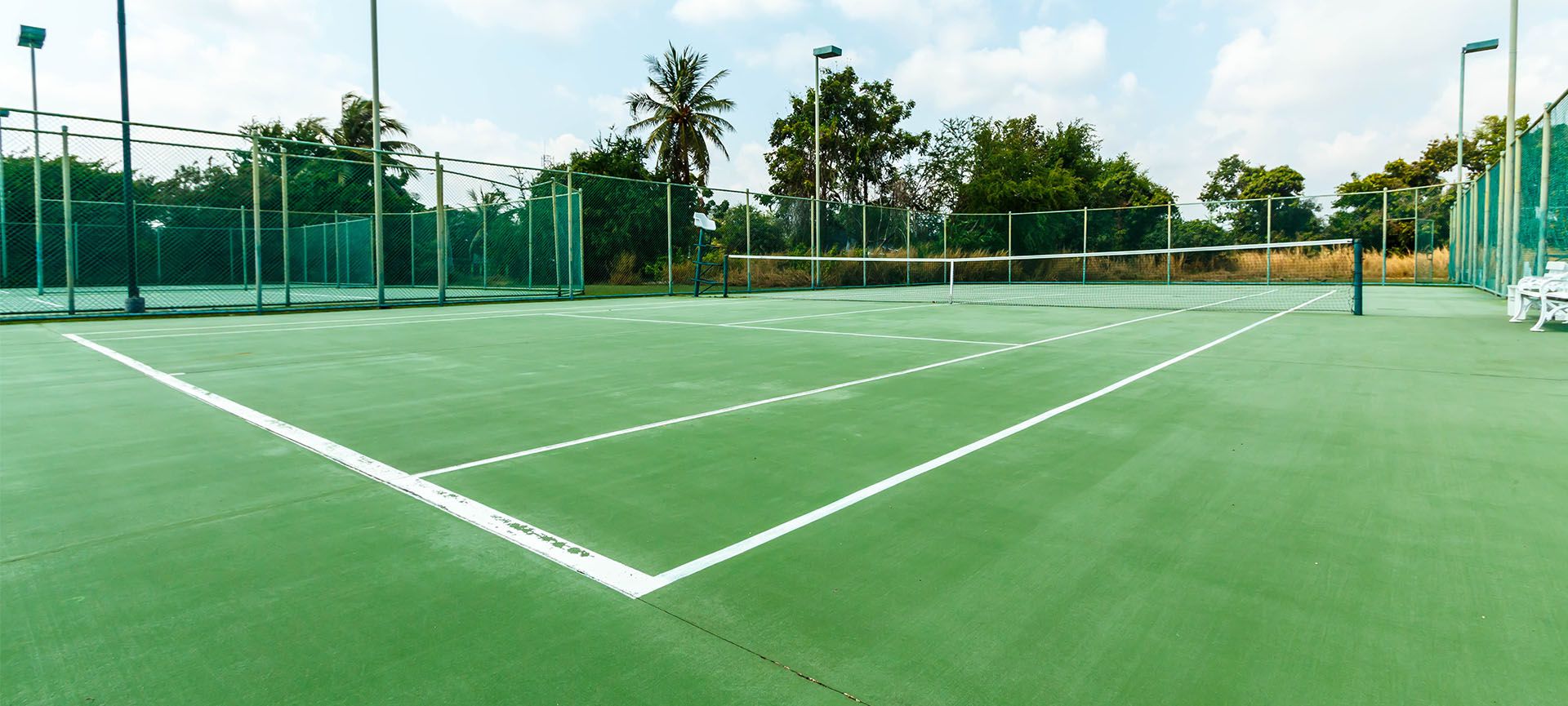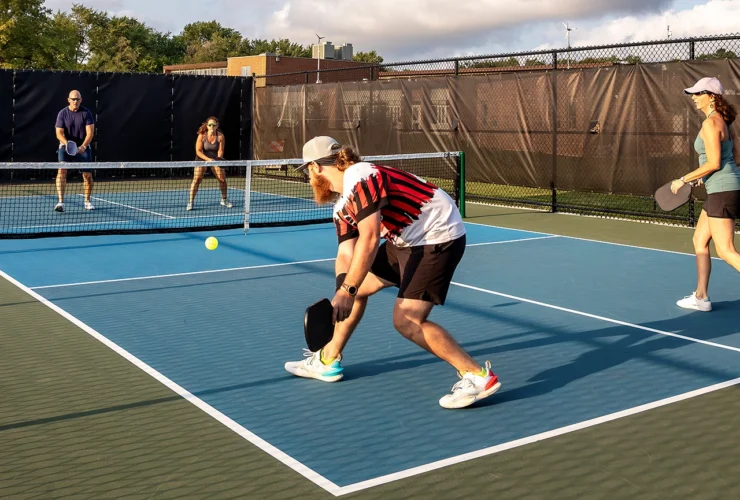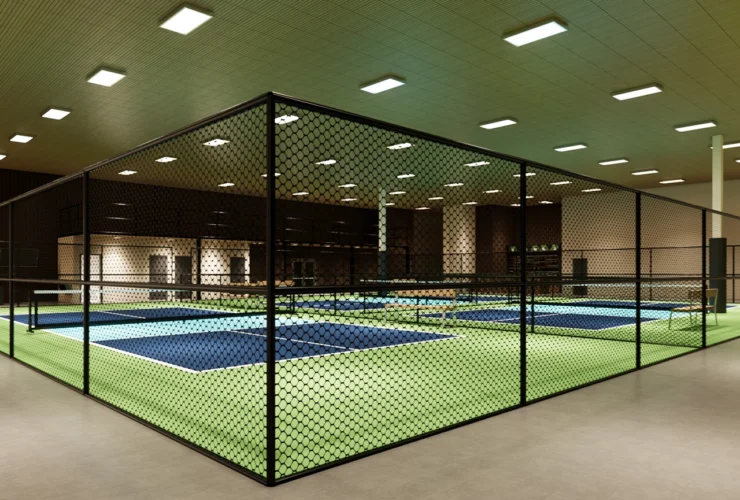The Steps Involved in Building a Tennis Court from Scratch
Whether you’re an avid tennis player or just looking to add a new recreational activity to your property, building a tennis court can be a great addition. However, it’s important to understand the steps involved in such a project before getting started.
In this blog post, we’ll walk you through everything you need to know about building a tennis court from scratch. From site preparation to choosing the right materials, we’ve got you covered. So grab your racket and let’s get started!
Choose the perfect location for your tennis court
Choosing the perfect spot for your tennis court is an important decision that should ensure years of enjoyment. The ideal location will be level and in full sun to ensure the best quality playing surface is achieved.
If possible, try to select a site away from existing trees to avoid any future issues caused by overhanging branches, obstructed views or shade on the court surface.
You may want to add some natural wind protection such as trees or shrubs along one side of the court – but remember that this can significantly reduce the amount of direct sunlight reaching the court.
Bringing your dream tennis court to life is an exciting and rewarding process – selecting the perfect spot is a great place to start!
Prepare the site
The next step is to prepare the site. This includes levelling and compacting the surface, as well as removing any existing vegetation such as grass, trees or shrubs.
You may need to hire a machine such as a bobcat or an excavator for this part of the process. An excavator makes it simpler to dig and level out an area in order to create a flat playing surface. An expert tennis court construction team can deliver insights on how deep and extensive the area needs to be to give players the space they need.
Careful calculations and guidelines must be followed in order for the court to be safe, reliable, and up to the standards of well-constructed courts. Further excavation will reveal any hidden surprises that can aid or hinder construction progress.
Install a drainage system to keep the court dry during wet weather
Having a proper drainage system installed on the court is essential to having enjoyable, safe games even when it’s wet outside.
Make sure any existing drainage is improved so there’s no risk of water pooling or flooding on the court surface. It will help ensure that players don’t have to worry about the slippery and hazardous surface of a wet court and can play without fear of slipping and falling.
A good, reliable drainage system is a high priority if you want to guarantee great playing conditions year-round.
Related Article: Tennis Court Materials: A Comparison Of Surfaces And Their Suitability For Different Climates And Uses
Put down a base layer of crushed stone or gravel on the tennis court
The next step to creating a beautiful and durable outdoor tennis surface is to lay down a base layer of crushed stone or gravel on top. This layer acts as the foundation, providing a sturdy and even level on which subsequent layers can be built.
It also helps create an even surface by filling in any uneven areas or dips in the tennis court surface. Make sure the layer is spread evenly and is at least four to six inches thick for the best results.
The best type of crushed stone or gravel to use should be determined based on its compatibility with other materials, drainage needs, and the stress placed on the foundation layer. When correctly put in place, this will ensure that any work you do atop it will look great for years to come.
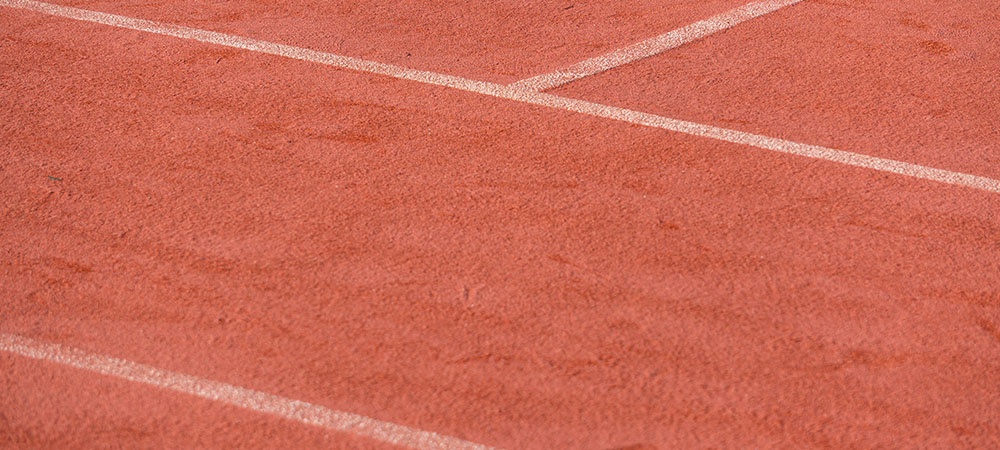
Add a layer of asphalt or concrete over the top of the base layer
Once the base layer of crushed stone or gravel is in place, it’s time to add a final surface layer. The two most common materials for an outdoors tennis court are asphalt and concrete — both of which provide excellent durability as well as a great playing experience. Each material has its own unique characteristics that can affect the playability of your court.
Asphalt is a popular choice as it’s relatively inexpensive and easy to install. It’s also great for providing traction and shock absorption, helping to reduce player fatigue while they play. Concrete, on the other hand, is more expensive but provides a hard-wearing surface that stands up to wear and tear better than asphalt.
No matter which material you choose, make sure to lay it down correctly with the help of a professional for optimal playability and durability.
Top dress, level out and install the court surface
The next step in building a tennis court from scratch is to top dress, level out, and install your chosen court surface. Clay courts are popular in warm climates, while grass and acrylic courts are more suitable for cooler regions.
Whichever court surface you choose, make sure to hire experienced professionals who can lay the surface correctly and ensure that it is even and level. This step is essential if you want a flat playing surface with consistent bounce so you can enjoy your games without fear of tripping or injuries.
Install fencing around the perimeter of the court to keep balls from flying off
Fencing is an easy and effective way to ensure balls stay on the court – whether it’s a soccer field, a basketball court, or a tennis court. By installing fencing around the perimeter of the court, we can guarantee that balls don’t fly off and get lost in surrounding shrubbery or hazardous areas.
Fencing also sets the tone by clearly demarcating the court; it lets players know exactly where their playing limits are.
We recommend installing a mesh or chain-link fence as this will help absorb impact from stray balls. Additionally, netting could also be used to set up certain boundaries.
Whatever you decide upon, placing fencing around your court will instantly upgrade its look while providing an added layer of protection against errant balls and potential hazards.
Install Wind Protection Structures
The final step to completing a tennis court is installing wind protection structures. Wind can be a major annoyance when playing, making it hard to hit accurate shots and messing up the delicate balance of the game. To prevent this, consider adding wind protection structures such as walls or screens around your court.
These will help contain the wind and give players the freedom to focus on their game without having to worry about wind-induced distractions. Wind protection structures can also add a nice aesthetic touch, making your court look more professional and polished.
Related Article: Tennis Court Landscape Designing: Tips For Creating A Beautiful And Functional Space
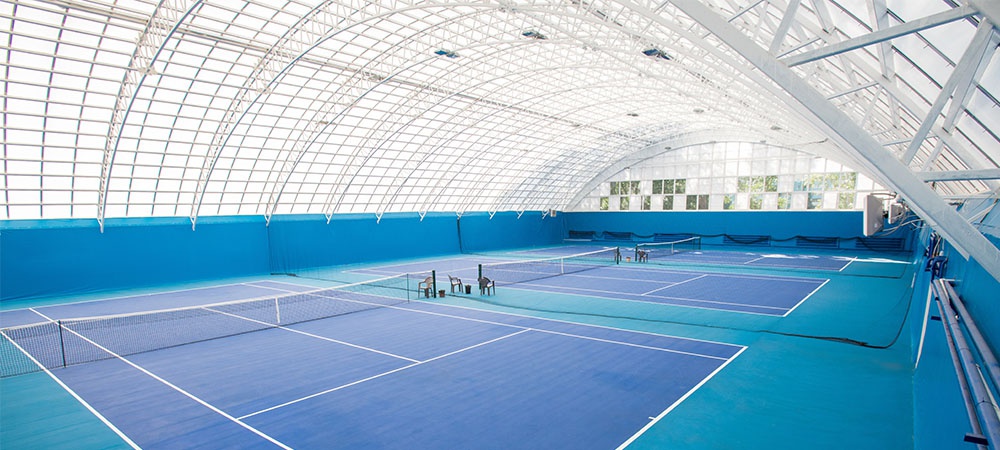
Final Thoughts
You are officially ready to serve up some fun and fierce matches in the comfort of your own backyard. As you can see, building a tennis court is an involved process that requires prep work and patience—but in the end, it is totally worth it.
The good news is that once you have invested time and energy into completing this project, you will be able to happily reap the rewards for years to come!
Our expert tennis court construction team at Crowall Surface Contractors are more than happy to hold your hand through every step of the process. We’ll help you achieve the satisfaction that comes with knowing you have created something special out of nothing more than an area in your yard.

